Jim Poling Sr.'s Blog, page 22
November 14, 2019
‘Forget it, Jake. It’s Chinatown’
Movies set in times past sometimes reflect times present.
I was thinking about that while re-watching the Hollywood classic Chinatown, starring Faye Dunaway and Jack Nicholson.
A brief refresher: Nicholson plays Jake Gittes, a former cop in the Chinatown district of Los Angeles. He’s now a private gumshoe hired by folks who suspect their spouses are cheating on them.
Dunaway plays Evelyn Mulwray, wife of the city’s straight-arrow chief water engineer who is framed for adultery that never occurred, and later is murdered. Evelyn is a mysterious lady with deep secrets and a corrupt father whose his son-in-law is standing in the way of him making a lot of money.
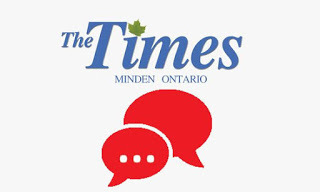
During his investigation into whether Mr. Mulwray was cheating on his wife, Jake stumbles into a cesspool of greed and corruption involving a plan to divert water from Los Angeles, which is in the midst of a drought. The diverted water scheme is a land and water grab that will make certain people rich and they manipulate, lie, cheat and even murder to get it done.
The investigation leads Gittes back to Chinatown, where he recalls he did “as little as possible” as a Los Angeles cop. That’s a reference to the district’s reputation of having so much crime and corruption that cops often sighed and looked the other way because they believed that they could do little about it.
We Canadians have our share of crime and corruption. We talk about it a lot but often sigh and turn our heads to look the other way.
For instance, RCMP charged Quebec’s SNC-Lavalin company with defrauding the Libyan government of $129.8 million. The Canadian prime minister’s office tried to have our justice department look the other way because a Lavalin conviction would lead to job losses.
Then there is the money laundering in the real estate market. If you can get $2.9 million for a house that is worth $300,00 who cares if the buyer is laundering money for a drug cartel? It’s wrong, but it continues.
Toronto has become a major centre of gang violence. Gunshots are heard in that city pretty much every day and besides killing and wounding, those gunshots are the noise signalling an increasing amount of crime and corruption. It’s wrong, but it continues.
And, the opioid epidemic, once a big city problem now reaching into small communities, is not just about addiction. It’s a crisis fuelled by corruption and crime. All wrong, but it continues.
Then there’s climate change, probably our most daily talked about topic. Meanwhile, we see people drinking water from plastic bottles at environmental rallies. And, the prime minister flying in a carbon-emitting pig of an aircraft from Ottawa to B.C. to spend a day or two surfing.
All this stuff is wrong and pulling down our society, but many of us are weary or leery of tilting at windmills. Let someone else do it.
Lots of concern. Lots of talk. Little progress.
At the end of the movie, Jake Gittes stands in a Chinatown street where Evelyn Mulwray has been shot dead and the corrupt people behind the water diversion scheme, including Evelyn’s father, have won.
Once again the darkness of corruption has overwhelmed what is good and right.
One of Jake’s colleagues turns to him and speaks the famous words that end the movie:
“Forget it, Jake. It’s Chinatown.”
As movie critics have noted, Jake is being told to give up and look the other way because nothing can be done to change things without becoming just another victim of the way things are.
The line “It’s Chinatown” is about not being able to change things no matter how much you tilt at windmills.
But Chinatown is not a district of LA, or any real place. It’s the entire world, and Jake Gittes is each and every one of us.
We shouldn’t do what so many of us have been doing – seeing the rot consuming our societies, then looking away and trying to forget it all.
Our world does not have to be Chinatown. It’s a movie screenplay that we can rewrite, if we all put our minds to it.
#
Published on November 14, 2019 05:51
November 7, 2019
Gone, but not forgotten
Slap!!!
That is the sound of my hand crushing the life out of the last mosquito of 2019.
The mosquitoes stayed late this year, possibly because of the wetness and lack of frost. I can’t ever recall being bitten in October before, but this year I had several late October stings.
Now the mosquitoes finally are gone, out of sight, out of mind, until May.
It is a mistake to put them out of mind. We need to think seriously about mosquitoes and the growing health threats they present.
Our planet is warming, encouraging bugs and plants once confined to warmer southern areas to move north. Ticks carrying Lyme disease are moving beyond their normal ranges of southwestern Ontario and have reached on the edges of Haliburton County.
Mosquitoes carrying viruses not known in northern climates also are moving north. In the past 10 years or so nine previously unknown species have been added to the list of mosquitoes found in Ontario. That list has grown to 67 different species.
West Nile virus, not seen in North America until 20 years ago, is here now. Aedes aegypti, the mosquito capable of carrying the Zika virus, was found in southwestern Ontario two years ago.
That mosquito also has been known to carry other tropical diseases such as dengue fever, chikungunya, and yellow fever.
There also has been an increase in North America of eastern equine encephalitis, Triple E, as it is sometimes called, a once rare but deadly mosquito-borne virus. There were three confirmed Triple E deaths in Michigan this past September.
At the end of October the U.S. Centres for Disease Control reported 35 confirmed cases of Triple E this year, 10 0f them in Michigan. Thirteen of those 35 infected people died.
To northerners, mosquitoes always have been just a summer annoyance. Different species moving north are a health threat not to be taken lightly.
Just ask Timothy Winegard, a professor at Colorado Mesa University and a Canadian, originally from Sarnia. His new book, The Mosquito, documents how mosquitoes and the diseases they carry have changed world history.
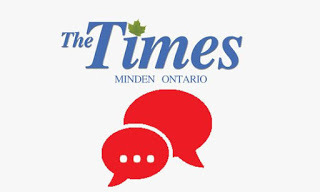
He writes that mosquitoes have killed more people than any other cause of death in human history. He estimates that mosquitoes carrying disease have killed almost one half of the 108 billion humans who have lived over the past 200,000 years.
His book documents how mosquito–borne diseases such as malaria changed war outcomes, decided the fates of empires and altered human history.
“The mosquito remains the destroyer of worlds and the preeminent and globally distinguished killer of humankind,” Winegard writes in the introduction to his book.
Last year the mosquito and her diseases killed 830,000 people worldwide.
I wrote herbecause only female mosquitoes bite. They do so to get blood needed to grow and mature their eggs.
Female mosquitoes will bite anyone with blood, but they do have some preferences. Research shows they have a special taste for Type O blood. People with Type O are bitten more often than folks with Type A or Type B.
Also, mosquitoes have an affinity for beer drinkers, although no one seems to know why.
Pregnant women get bitten twice as often as other people. Scientists say that is because pregnant women give off 20 per cent more carbon dioxide (CO2) than the average person. CO2 and the body chemicals that are mixed with it attract mosquitoes.
These are mild preferences that science still does not completely understand. What we do know as fact is that anyone with blood in their veins is a potential victim.
Being a victim once meant simply being irritated by an itchy bump on the skin. But that is changing as more mosquitoes carrying serious disease find their way farther north.
Many people bitten and infected with West Nile or Zika might not show any symptoms, or might temporarily feel feverish with muscle weakness.
However, West Nile and Zika can have serious consequences for some people. West Nile can infect the nervous system resulting in meningitis or encephalitis and bring on long lasting paralysis similar to polio. Zika has been linked to a serious birth defect and to Guillain-Barré syndrome.
So although they are gone, we should be thinking about being more careful about mosquito protection for when they return.
#
Published on November 07, 2019 05:03
October 31, 2019
Thoughts while waiting for winter
Reflections during a dismal post-election, pre-Hallowe’en week:
Presumably, and hopefully, blackface will not be part of Hallowe’en costuming this year.
It was when I was a child. The only concern back then was expressed by our mothers. They worried that shoe polish would irritate our skin because the polish contained solvents like naphtha and Turpentine.
Mom insisted on applying a coat of protective cold cream to my face before dad applied the shoe polish.
Times change. We all move along, often becoming smarter and more sensitive.
---
Evidence this week that animals tire of being pushed around and hunted. Sometimes they push back.
An Arkansas deer hunter died when a buck he shot and presumed was dead, gored him with its antlers.
The hunter dropped the buck with a muzzle loader, then walked up to check that it was dead. It wasn’t. It got back to its feet and gored the hunter, who died later in hospital.
Meanwhile in Olonets, Russia last week a 660-pound brown bear attacked its trainer during a circus performance. The attack occurred during an act called Clubfoot and the Wheelbarrow in which the trainer forces the bear to stand on its hind legs and push a wheelbarrow.
The bear was not in the mood. It attacked the trainer, pushing him to the floor then climbing on top of him.
Another trainer ran into the ring and began kicking the bear to get it to stop.
Neither the trainer nor the bear were injured.
The trainer later attributed the bear’s attack to its age and joint pain that flares up seasonally. I understand that completely.---
Still with critters, there is new research on ants that provides us lessons for avoiding traffic jams.
Researchers built highway systems connecting large ant colonies with small village type colonies. Then they watched ants moving between the places.
There were no ant jams, nor multiple ant crashes. Ant traffic moved steadily without the traffic snarls we humans see on our highways.
The researchers concluded that ants avoid traffic foul-ups by changing their behaviour to meet changing conditions. No individual speeding up and slowing down. No lane changes to get ahead of the guy in front.
The lesson: humans drive in ways that satisfy their individual objectives. Ants travel collectively, co-operating with each other to optimize food collection for their colonies.
---The recent federal election brought us some new faces to Parliament and a lot of new talk about separation.
The sovereigntist Bloc Quebec more than tripled its standing in the House of Commons but said it will follow a nationalist agenda. For now. Still it is a party formed to achieve Quebec separation from the rest of Canada.
The election also revived talk of separation in Alberta and Saskatchewan. There’s even a new name for western separation -- Wexit, a meme concocted after Britain’s Bexit movement to leave the European Common Union.
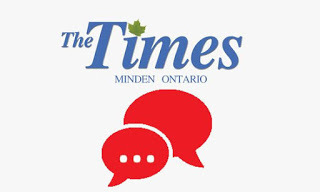
Separation talk, of course, is old hat in Canada. Those of us born and raised in Northwestern Ontario lived with the dream of not being governed by provincial powers created and exercised in Toronto the Good.
Toronto and a large chunk of southern Ontario surrounding it grabbed our natural resources and taxes on money earned from our hard work in the pulp and paper and grain elevator industries. Little of it ever came back to us, leaving us like orphans forced to fend for ourselves.
Those industries declined, killing many jobs and the taxes they paid. Toronto the Good did not give up on the northwest as a source of income, however. Now it has sent its gangs, pimps and drug dealers to suck dollars out of Northwest Ontario folks, Indigenous people in particular.
Thunder Bay has a booming illegal drug industry and was Canada’s murder capital with almost seven homicides per 100,000 population in 2018.---
Despite the federal election mess and Winter whispering “Run hard, I’m almost on top of you,” we Canadians should not feel down. We still have our sense of humour, despite most of our comedians having moved to the United States.
So what if our roads are bumpy messes? It won’t be long before all those unrepaired potholes will be filled with snow. There’s smooth sailing from here on in.
#
Published on October 31, 2019 06:11
October 17, 2019
Predictions for winter
The acorns are the first alarm.
Night breezes rustle the oaks, shaking their capped nuts from their branches. I hear them hitting the steel roof above my bedroom. My slippers crack and crunch them when I step onto the deck to check the morning weather.
I am worried. Many acorns are a bad sign. They are one of 20 signs indicating that we are in for an early and vicious winter.
I need to check out the other 19, and if they confirm a bad winter, I need to prepare.
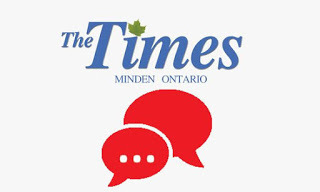
I could consult weather services like Environment Canada, The Weather Network or Accuweather. But they use algorithms now rather than getting outside and looking for real weather signs.
I’m old-fashioned and would rather rely on the age-old indicators passed down to us through folklore. Things like an unusual number of acorns and squirrels gathering them and other nuts to fortify themselves against a long and hard winter.
Or, thicker-than-usual hair on the nape of a cow’s neck, and corn husks that are much thicker than normal.
I don’t have any cows to check but I do have a corn patch. There’s no use checking it out though, because there are no corn husks. The raccoons have stolen the cobs, husks and all.
Raccoons themselves can be a good indicator the winter ahead, according folklore. If you see any with bright bands on thick, bushy tails that’s an indicator of a hard winter. There are no raccoons to be found around my place, however, because they are hiding somewhere gorging themselves on the corn they stole from my garden.
There are other animal signs to watch for. Two woodpeckers sharing the same tree and pigs gathering sticks are said to be reliable signs of a long, cold and snowy winter.
I don’t really understand those. All woodpeckers share the same tree – it’s the one outside my bedroom window on which every woodpecker in the county hammers at five o’clock in the morning.
And pigs gathering sticks? There are no pigs around where I live and what they would do with sticks is beyond me. Unless pigs have taken up hockey.
Another sign that folklore holds highly reliable is the “early arrival of crickets on the hearth.”
I don’t have a hearth. I have a woodstove and any crickets gathering there would be fried to a crisp because it has been so cold in the mornings that I’m already deep into my winter woodpile.
The 20 ‘bad winter ahead’ signs offered by folklore aren’t all that helpful this year so I consult the tried and true farmer’s almanac.
That can be confusing. There is The Old Farmer’s (apostrophe s) Almanac that dates back to 1792. Then there’s the Farmers’ (s apostrophe) Almanac that started in 1818 and it’s easy to get them mixed up.
A Canadian version of the Old Farmer’s Almanac tells me to expect a winter of “snow, snow and more snow.” It is predicting no fewer than eight major snowstorms, including “a series of significant snow events” in mid-to-late January.
The Farmers’ Almanac is calling for a “freezing, frigid and frosty” winter for most of the country. It predicts more lake effect snow for Ontario – as much as 70 centimetres in one day. Add to that a prediction of a late and chilly spring.
The average winter snowfall for Haliburton County (November through March averaged over 1981 to 2010) is 8.2 feet. Last winter the county received 10.5 feet November through March, plus more rain than usual. It snowed, at least a trace, on 96 days last winter between November 1 and March 31.
So the outlook for winter 2019-2020 is not looking good. The only positive predictions are that the winter will start late, but when it does it will bring frigid temperatures and heavy snowfalls in January and February.
If you doubt any of the predictions you can check out a couple of folklore signs on your own. Look to see if the ants are marching in a straight line rather than meandering, Or, watch to see if muskrats are burrowing holes high on the river bank.
If you see those things, break out the snow shovels and haul in more firewood.
#
Published on October 17, 2019 06:43
October 10, 2019
The story of Trumpinocchio
Vladimir Vladimirovich Putin was a solitary child with no interest in things that amused other children. His sole plaything was a fat red crayon with which he drew world maps.
His crayoned maps showed a world in which Russia was given greater space and prominence. One showed Greenland as part of the United States. A later one showed the U.S., including Greenland, a part of Russia.
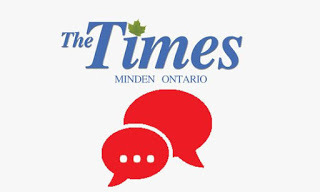
Vladimir Spiridonovich Putin and Maria Ivanova Putina worried that their son Vladi was too introspective, too sullen. They consulted a child psychiatrist who recommended a hobby for the boy, so they bought him a wood carving set.
Vladi was delighted. His first project was a puppet. He carved the legs, arms, body from tamarack and the head from soft pine. He glued on yellow straw for hair.
Then he strung all the pieces together with strings attached to an X crossbar. He practised manipulating the cross bar so the puppet danced and jumped and did whatever Vladi wanted it to do.
He wanted to name his puppet Goldilocks but it did not translate well into Russian. So he called it Trumpinocchio, which translates as pine seed brain.
Vladi worked the strings so expertly that the puppet looked like a real person - arms and legs moving, eyes blinking.
Then one day the puppet’s lips moved. They just twitched at first, then fluttered, then flapped at hurricane force speed.
“I want to be a real person,” Trumpinocchio began jabbering. “A real guy who does really big things and makes things really great again. Are there any cheeseburgers here?”
Vladi was excited. But as the weeks passed the blabbering puppet became annoying, pestering relentlessly about becoming a real person.
So Vladi took him to see Baba Yaga, a mystical woman who lived in a dark forest nearby, and was known for her magic.
Baba Yaga granted magical favours to important and powerful people, and could see into the future that Vladi would become a spymaster, spin doctor and powerful politician. She agreed to turn Trumpinocchio into a real person.
“But I can’t guarantee how he will turn out,” she warned. “It’s hard to predict when the head is made of pine. He needs to go to school.”
So the Putins enrolled Trumpinocchio in school, bought him a laptop computer and signed him up for a Twitter account. He blabbered and Twittered incessantly, bragging about his accomplishments and spreading fake news about teachers and students at his school.
At home he preened at the bathroom mirror for long periods, causing other household members to have bladder accidents. There was constant arguing over the television because he hogged it to watch American shows.
Trumpinocchio refused to learn to spell or to add numbers. The school nurse observed that his nose grew whenever he lied, which was often. The school principal reported complaints from female students.
“He’s ruining our lives,” Mr. Putin Sr. told his family. “He’s taken over the bathroom! He’s taken over the TV! Yesterday he walked into the door and punched a hole in it with his nose. He’s got to go!”
“Send him to America,” said Mrs. Putin. “He’s always talking about Big Macs and Cokes.”
So Vladi called his friend Mitchikov and asked him to help settle Trumpinocchio in America where Vladi expected that he might become useful.
Vladi financed his puppet in various business ventures, including real estate, but they all failed because Trumpinocchio could not add. There was Trumpinocchio Airlines, Trumpinocchio Hotels, Trumpinocchio University. Even Trumpinocchio Vodka with its 24-karat gold labelling went bankrupt.
As predicted, Vladi became a powerful Russian spymaster, who was increasingly frustrated that Trumpinocchio could not get focussed and become useful.
So he returned to the dark forest to consult Baba Yaga. Her advice was cryptic.
“Look beyond what you can see, Vladimir,” she said. “Reality is what you tell people it is. There are always alternate facts and alternate realities. Go back to Moscow and think about what I have told you.”
Vladi spent days in his Kremlin office pondering Baba Yaga’s enigmatic advice. Then it hit him like a lightning bolt. He grabbed his telephone and called America.
Some months later Trumpinocchio became a reality TV star.
And, as they say, the rest is history.
Published on October 10, 2019 05:04
October 4, 2019
And no birds sang
Fifty-seven years ago last week – September 27, 1962 – Rachel Carson published Silent Spring, the book that really got us thinking about what we are doing to the environment.
Silent Spring predicted more future consequences from indiscriminate use of pesticides and other ways that we are abusing our world. Those predications are coming true.
A dramatic new analysis published in the journal Science says the U.S.-Canada bird population is almost three billion birds smaller than it was 50 years ago. The analysis is based on a study by seven research institutions in Canada and the United States.
The number – 2.9 billion fewer birds - is shocking, but not totally surprising. That fits with my observations at the cottage, where songbirds once provided an abundance of joy.
A few finches and grosbeaks, once a daily feature at our place, showed up a couple of months ago, bringing a spark of hope. But this fall there is little birdsong around our place and walks in the woods have not flushed one ruffed grouse.
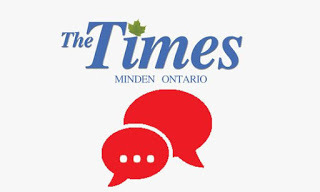
Almost six decades after Silent Spring, I am witnessing Silent Autumn.
Habitat loss and pesticides are two proven causes of bird decline. There are fears now, however, that changing climate is a contributing factor.
Scientists says there is no evidence that climate change is directly killing birds. Changing climate is, however, having indirect effects.
Recent studies have reported huge declines in insect populations. Insects and birds are hugely important to each other. Many birds eat insects for food. So fewer insects to eat means more birds searching for food to stay alive.
More importantly, rising world temperatures are bringing insects, and diseases they carry, to places they have never been before. For instance, mosquitoes carrying malaria, West Nile Virus (WNV) and other diseases are populating areas beyond their historical range.
There is a ton of Americans research on the impact of mosquito-borne disease on birds. U.S. studies have detected the presence of the West Nile Virus in more than 300 species of birds, including ruffed grouse.
Little research has been done in Canada, possibly because nasty bugs and the nasty things they transmit have been limited to warmer areas south of us.
That is changing. Our temperatures are rising and bugs and viruses are moving north. Ticks carrying Lyme Disease are one example. Mosquitoes transmitting the WNV are another.
Canadian research, especially into the impact of West Nile on birds, is urgently needed, Thankfully we are getting some, from Dr. Amanda MacDonald, a University of Guelph researcher specializing in wildlife disease.
Her study is building data on wild turkeys and ruffed grouse exposed to West Nile in Ontario and Quebec. She is encouraging turkey and grouse hunters to help by submitting blood samples from birds they have shot. The study supplies filter strips for blood collection and postage-paid envelopes for submitting the samples.
Birds can be infected with West Nile when bitten by a mosquito which has bitten and drawn blood from an infected bird or animal.
Not all birds exposed to the virus become ill, or die. However, it does seem to hit hardest the corvid family of birds, of which crows and jays are members.
American research indicates that West Nile is reducing ruffed grouse populations. MacDonald’s study will provide information about levels and locations of exposure and could be a start to determining whether West Nile is a factor in shrinking grouse populations.
It also will be important for wild turkeys. Governments and private organizations spent much time and money on reviving wild turkey populations in Ontario. Any threat to that revival needs quick and thorough research.
We must learn everything about what is killing the birds so we can do more to prevent the losses. Not just because they are lovely to look at and wonderful to listen to.
West Nile, Lyme and other insect-borne diseases are becoming more common in our world. So far this year the U.S. Centers for Disease Control has reported well over 300 human cases of WNV, with 45 states and the District of Columbia reporting exposure in mosquitoes, birds or humans.
Silent Spring warned us 57 years ago. Now things that can hurt us are moving our way and we need to be better informed, better prepared.
#
Published on October 04, 2019 06:01
September 26, 2019
Among the oaks
There is no better place to sit and think than on one of the rocky outcrops offering entrancing views of the magnificent Haliburton landscape.
I am sitting on one now, staring down at the mysteries of forest life, and into a clearing where perhaps a doe and her fawn, or a meandering black bear, might appear.
This is a wonderfully intriguing place, but not just because of the chance to see wildlife. From my vantage point I get to study a small piece of nature and reflect on what a great teacher it is.
What fascinates me is how anything can grow on this hill of blue granite, created thousands of years ago from a surging of molten rock.
There is little plant life on this tabletop of hard rock. Yet somehow there are trees. Not just any trees, but regal red oaks standing strong and proud like monarchs overseeing their kingdoms.
Somehow these oaks made a home here. Over many decades, decaying vegetable matter carried by the winds gathered into crevices in the rock, eventually becoming soil. Acorns dropped by birds, squirrels or wind found their way into the soil-filled crevices and began the lives of the mighty oaks now here.
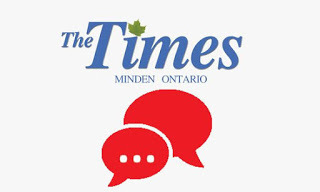
However, some of the oaks are mighty no longer because they are not standing. And that’s the reason that I am up here.
A couple of summers ago a wild, twisting wind roared into this forest, knocking down poplars and evergreens in the lower areas. Not content with wreaking damage down there, the wind turned and spun its way up and across this rocky hill.
The oaks are rooted tenuously on the rock, and sixteen of them were uprooted by the wind, which I believe was small tornado. It was sad to find them lying there, their only use now being winter firewood, to which I am entitled because I have legal deed to this forest although in fact I am only its temporary custodian.
Cutting firewood is satisfying, but tiring, work. So whenever I stop the chainsaw to take a rest I sit on the rock and think about this forest.
The similarities between human life and the lives of trees in this forest are fascinating.
The oaks have formed a colony on this rock tabletop because they are strong and conditioned for living in meagre conditions. Enough rain slides off the smooth rock surfaces into crevices to quench the roots’ thirst.
Below the hill, the fast-growing poplars have colonized the soft, rich soil areas. Some now are 80 to 100 feet high, threatening to block the sunlight needed by the oaks on the hill. Poplars, unlike the oaks, have a short life span and the tallest ones will have expired before they become a real threat to the oaks.
Two other interesting trees have gathered in preferred living areas of this forest. Young white pines, once the dominant tree species of this part of the country, are populating open areas featuring sandy soil conditions. Here their roots can spread easily and their needles can catch the sunlight and the open air that they love.
Farther off to my right and out of sight are the clean-cut, smooth-bark beeches. They occupy an east exposure hillside that bathes in the morning sun.
Not one beech is found on the far side of that hill. Why I am not sure. Perhaps they simply favour the morning sun over the evening sun. They seem to have found a place they like and have no intention of spreading farther.
These tree families are much like people families. There are times when change forces them to migrate. When they do, they pick places where they believe they can put down roots, have productive lives and raise future generations.
Looking down from this outcrop I can see patches of mixed forest. Areas where pines, poplars, oaks, maples and beeches are living together despite their different needs and preferences.
The human world also is well along the way to blending into a mixed forest of people.
When you sit staring out from a rocky outcrop, nature tells you that while there are many species of trees, and many different races of people, trees are still trees and people are still people, no matter what their differences.
#
Published on September 26, 2019 05:31
September 12, 2019
The unfair cottage tax
The campaigning has yet to hit full stride, but federal election day is just over a month away with plenty of serious issues to debate. There is one issue that will not see any debate, probably because it does not impact large swaths of voters.
That issue is the unfairness of the capital gains tax on cottages. It is an issue that causes much grief among older folks wanting to pass the family cottage on to the next generations.
Capital gains tax applies when a capital asset is sold for more than the purchase price. For instance, if you bought a stock for $1,000 and sold it for $10,000, capital gains tax applies to 50 percent of the $9,000 gain. So you pay tax on $4,500 at your marginal tax rate.
Seems fair enough. Make a profit, pay tax.
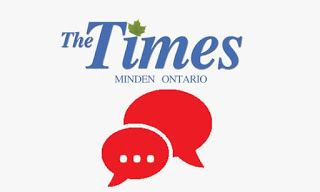
It’s not when it comes to trying to keep a cottage in the family.
Here’s the unfairness: You built a modest cottage on a lake 35 years ago. It cost $35,000 to acquire the lot and to get the bare bones basics built.
The children grew up enjoying the place, swimming, paddling, hiking, nightly campfires and all the other fun things children do at cottages. Suddenly they are adults with their own children and the cottage, which has undergone various renovations and additions, is being enjoyed by three generations.
People don’t last forever so the time arrives when the parents who built the place pass away, leaving the cottage to one or more children.
Improvements over the years added some value to the cottage. But basically it’s the same place, on the same lake, providing the same family enjoyment.
The improvements over the decades might have raised the total cost of the place to say, $100,000. However, when the children inherit it, they are shocked to find the market value is $600,000.
So federal tax law says that the market value of $600,000, minus the $100,000 total cost of the place, means there has been a capital gain of $500,000. The inheritors then are stuck with paying capital gains tax on one half of that gain, which could be a $100,000 or more tax bill depending on their marginal tax rates.
The children don’t have the money to pay the tax so they sell the cottage and pay the tax from the sale price. They now have a nice bundle of cash but the cottage that was a family treasure for 35 years is gone.
There no doubt are people who build or buy cottages to fix up and sell for profit. Their goal was to turn a profit, so it seems fair that they pay capital gains tax on the profit.
However, the family cottage enjoyed by three generations is different. The parents built it for pleasure, with no thought of financial gain. In fact, most family cottages are a financial drain – the price paid for the family’s enjoyment.
Improvements increased the cottage value. But they were made to accommodate the growing family. There was no expectation of financial gain or that the value one day would be $600,000.
A chunk of the increased value came from inflation. So part of the capital gains tax payable on the cottage is simply for inflation.
Look at it another way. You bought stocks in 2008 for $100,000. Over the 10-year period ended June 2018 inflation was roughly 16 per cent. So the $100,000 of stocks bought in 2008 now are worth $116,000 in 2018 dollars.
That $16,000 of inflation is a gain that is taxable if the stock is sold. Yet the $116,000 in 2018 dollars has no more purchasing power than the $100,000 in 2008 dollars. It is a larger number but because of inflation cannot buy more goods or services.
There are ways to reduce capital gains tax on a cottage passed to family members. However, finding the best ways involves hiring lawyers, accountants and realtors to work out the details.
I failed high school math twice so I’m not a reliable source on details of capital gains taxes. However, my rudimentary understanding tells me it is an unfair tax in legitimate cases of parents wanting to pass along the family heritage cottage to their children.
#
Published on September 12, 2019 05:18
September 5, 2019
When presses go silent
Silence is not always golden.
Sometimes it is sorrowful, even hurtful.
It was all that when the thunder of newspaper presses at The Hamilton Spectator faded to a whisper, then silence, last Friday.
It was like watching a heart stop beating. Presses that had printed billions of words of news for millions readers over many decades suddenly still and silent.
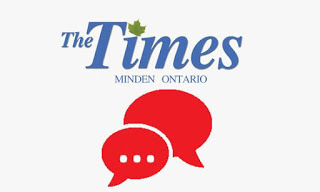
Those presses will not roar again. A hole will be smashed through a side wall of The Spectator building and a scrap dealer will dissemble and remove the colossal machines.
A small group of employees and former employees witnessed the final press run. I was among them because I have family connections to the paper, plus those presses printed many of my stories, written as a wire service reporter, later as a freelance writer.
The Spectator will continue to serve its readers in print and online, but printing and distribution will be done elsewhere by other people.
Watching the presses go silent was heartbreaking. But beyond the heartache and the nostalgia is the realization that a final press run is a reflection of what is happening in the newspaper business across North America and around the world.
Presses are going silent and are being sold for scrap metal to save money as newspapers fight plunging circulation and reduced revenues. It is a fight for life that started two decades or more ago. Many papers have not survived.
In Canada, more than 200 newspapers have closed in the last 10 years – 13 of them paid circulation dailies in fair-sized cities and 189 community newspapers in smaller centres.
In the United States there have been roughly 1,800 newspaper closures since 2004, more than 60 of them dailies. Newspaper circulation declined 40 per cent in the U.S. during the same period, and newsroom employment fell 45 per cent.
One result of all this is expanding news deserts – widening areas without newspapers. The number of communities whose citizens have diminished access to news critical to their lives, and to democracy, is growing rapidly.
This is a shame because we live in a time of misinformation, manipulated information and information massaged and shaped to benefit political and business interests and the powerful people behind them.
Newspapers and their professionally-trained editors and reporters are needed to correct and balance one-sided information by gathering and reporting facts. Despite the industry’s problems, the quality of newspaper reporting and writing has increased significantly in recent times.
Newspaper owners and publishers must accept some blame for the decline of newspapers and the resulting weakening of our democracy.
They lacked the foresight and innovation needed to maintain their newspapers’ important role in a changing society. They continued to do things the way they always had done, while new and innovative players like Microsoft, Amazon, Apple, Google, Facebook and Twitter exploded on the scene and changed the world.
The game is not done yet for the newspaper industry. Its future lies in delivering its important work to readers online.
It must, however, regain newspaper readership and that will require much innovative thinking. Much thinking in the past was about how to attract and please advertisers and not enough on readers, who are the industry’s most important customers.
Advertisers are important because they pay the bills and add value to the newspaper products. But without the most important customers – the readers – there is no need for advertising.
The newspaper industry needs to engage readers directly to help them understand how news is collected, how decisions about news are made and how it affects their lives. To show them that the only true news is news based on provable facts, balanced by context, and free of bias and opinion.
Newspaper owners and publishers need to get out of their offices and talk with readers because there is no future for newspapers without an engaged and committed readership.
There are a lot of intelligent people in the newspaper industry and my guess is that they will figure out how best to revive and revitalize this crucial aspect of our lives.
We have to hope so because as The Washington Post masthead states: Democracy Dies in Darkness.
It also dies when presses, or the digital production equipment that replaces them, go silent.
#
Published on September 05, 2019 06:52
August 29, 2019
Thoughts about autumn
Trees, I believe, are smarter than humans. They are more grounded, obviously, but they also have an advanced sense of life, a more mature understanding of what it is all about.
Humans see life as individual time frames with beginnings and ends. Trees see life as infinite – forever possible through change and renewal.
As autumn tiptoes across our landscapes, and trees shed their summer clothing, we humans feel a sense of sadness. The sun weakens, shadows lengthen, vegetation begins to die. We have a feeling of good things having ended.
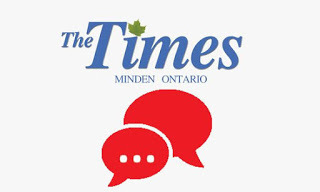
Summer, with its sun, fun and freedoms, has gone and left us sadly anticipating the bleakness of winter, which can be restrictive, confining and at times downright cruel. It is a time of change and change is something that most of us dislike and struggle against.
Trees, however, see autumn more positively. Autumn is an interregnum, a pause allowing time to prepare for changes needed for the continuation of life. Trees have an important role in the preparations.
Trees are diligent gardeners tending their close-at-hand plots with varying methods of cultivating and seeding. Muscular oaks hurl down acorns containing precious embryos for new life, while the gloriously-crowned maples helicopter their seed pods to the surrounding soil.
Seeds delivered, trees then float millions of dying leaves to the ground where they decay and create rich nutrients that soil needs for growth.
There is no immediate or apparent result from the trees’ autumn work. Many months must pass before the first indications of new life will appear.
But unlike we antsy humans, trees are patient and long suffering. They stand naked in the freezing winter winds, firm in their faith that the natural forces guiding all earth events will bring back longer hours of sun and warmth.
It’s not that humans don’t enjoy and appreciate autumn. The cool air it brings to replace oppressive heat and humidity is much welcome. So are the autumn days and evenings without stinging bugs and flies. Outside activities are fewer perhaps, but fewer active people around also means more serenity.
However, our appreciation of autumn is not deep enough. It is too self-centred. It lacks an understanding of the season’s important connection to other seasons and the continuation of life through millennia, not just years.
Trees demonstrate that understanding each September. We would do well to try to build a better understanding of autumn every time the trees begin to drop their seeds and shed their brilliant leaves.
It is not outrageous to say that trees can provide us with some wisdom and better understanding.
However, each year there are fewer trees to look to for their wisdom. The most recent assessments show that the world’s forest area decreased from 31.6 per cent of global land area to 30.6 per cent during the 25-year period 1990 to 2015. It is estimated that trees once covered 50 per cent of earth’s land mass.
The pace of loss has been slowing in recent years thanks to increased awareness of trees and their importance to all life. That’s really great news.
The not-so-good news is that much forest reduction is the result of clearing land to house and feed a growing human population. The current world population is roughly 7.6 billion and is expected to swell to 10 billion people in the next 30 years.
Studies estimate that population growth by 2050 will force the global demand for food to grow by 50 per cent. More mouths to feed means more land for planting, which means more trees have to be cut.
There are other concerns, notably fires, especially in the Amazon which is home to the world’s largest and most important tropical forest. Then there is climate change and how it might affect the land. And, of course anti-conservation politicians who seem determined to wipe out the conservation gains of recent decades, all in the name of progress.
Just looking at trees, especially in autumn, offers some understanding, and hope for the future. Trees have been here helping to perpetruate life for 360 million years without negatively altering the planet.
Humans, in our modern form, have been here a mere 200,000 years, generally wreaking havoc. The trees must know something that we don’t know.
#
Published on August 29, 2019 10:02



